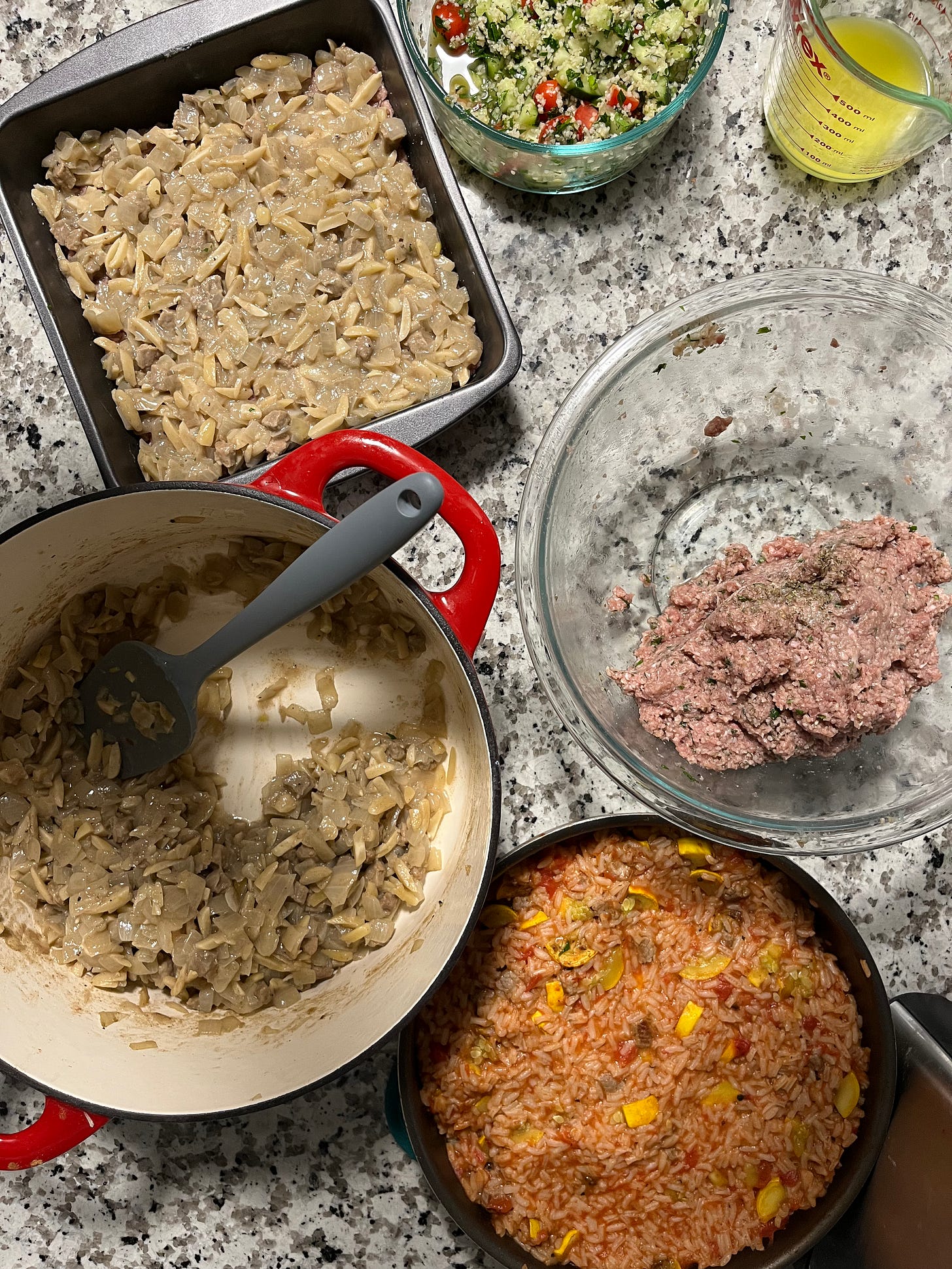Surprise! We didn't forget after the first two weeks of the year!
We’re getting things done that we actually said we’d do.
THIS IS WORTH CELEBRATING.
A few entries ago, I wrote about my New Year’s resolution was to make more Lebanese food.
This article is going to serve as a mini Lebanese log if you will.
Here’s what we got so far in the year of our Lord, 2023!
Kibbeh
As said before, this was the one that scared me the most. Scared as in I’d mess something up, not as in “boo” scared.
The most tedious part was making the filling (my family calls it hashwa? I can’t find the real name for the filling). This took about 45 minutes to an hour to fully cook down. All I can say is, this was worth the wait.
It’s onions (and lots of them), butter, slivered almonds, stew meat, and salt, pepper, cinnamon. But it might be the best thing I’ve ever tasted.
Maybe it’s the emotional connection? Maybe because it really is one of the best things on this earth! Who’s to say?
The meat mixture was easier than I thought it’d be. I went a little rogue and added fresh parsley to my mix, which is technically still traditional because many other family’s recipes included extra herbs and spices my family didn’t use.
There’s a simplicity in a lot of our recipes; that could be because of cost, could be by “Americanizing” our recipes, or because what was typical wasn’t readily available in our area. Believe it or not, the middle eastern market isn’t super big in small town south Texas!
I digress, I don’t believe I fully formed or baked it correctly. It was thicker than how my family usually makes it and took quite a bit longer to bake. I can confidently say though it wasn’t dry, and I call that a win!
It wasn’t the best thing I made, but was definitely delicious.
Kefta
This was my first time making this dish, and was the first time making a Lebanese dish outside of my family’s food wheelhouse! It was very easy and is a great weeknight dinner.
Traditionally, you use ground beef, but like a true artist used what I had on hand and used ground turkey. It was a bit dry, but wasn’t too bad!
I loved the cooked onions and Roma tomatoes, it made the dish feel so warm and wholesome.
While making this, I also ventured out into spices that are common in Kefta and Lebanese spices in general: cumin, ginger, cardamom, and nutmeg.
Overall, it was just…okay. I’ll definitely make it again, but I’d rather not make my ancestors turn in their graves with the turkey.
Ma’amoul
Now, we’ve talked quite a bit about ma’amoul. But, a few weeks ago, I killed two birds with one stone with these bad boys.
It was my sister’s birthday and I had an assignment due for a course I’m taking about how food plays a pivotal role in American identity and culture. My job was to make a food performance video, and this was the result: creating an Americanized ma’amoul roulette game for my sister.
There were 4-5 different flavors, one traditional…the others were far far from traditional.

That’s enough appropriation for today!
On a related note, I watched a food documentary on Netflix a few days ago that argued that no food is technically “authentic” as every culture borrows (or steals) different techniques and methods from each other and has to modify recipes for their resources. It’s an interesting thought.
But! Nonetheless, I do not recommend making Turkey Kefta and PB&J ma’amoul. Just don’t.
With love,
Cara






LOVE THIS! It is called Hashwa. When you make a little ball of raw kibbi and put the hashwa inside of it, it is FABULOUS!!!
Video funny